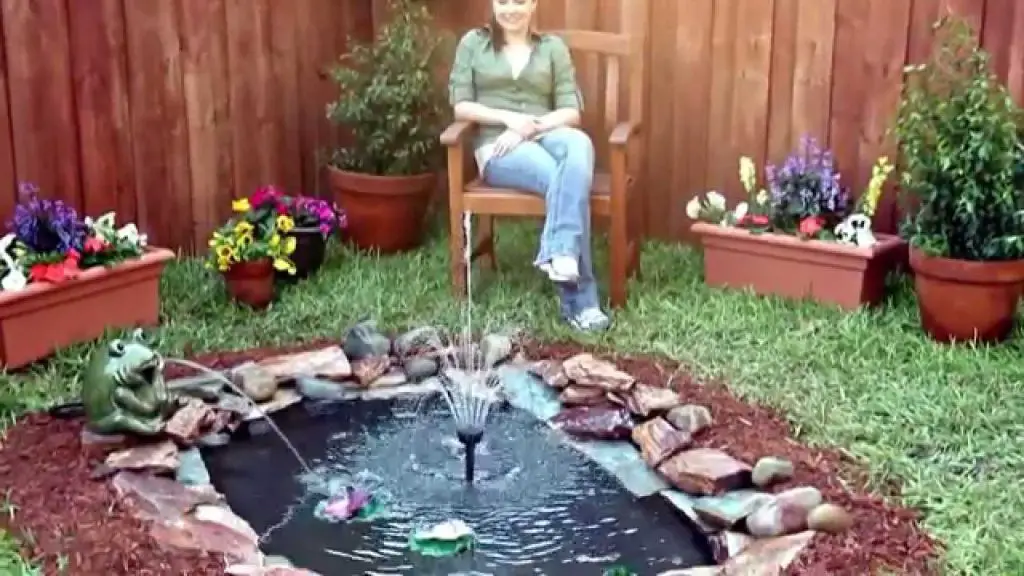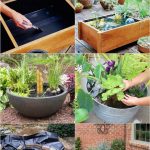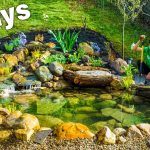How to Build a Small Garden Pond
Are you looking to add a touch of tranquility and natural beauty to your outdoor space? Building a small garden pond can be a rewarding and enjoyable project that enhances the aesthetics and ambiance of your garden. Whether you want to create a peaceful retreat, attract wildlife, or simply add an eye-catching feature to your landscape, a small garden pond can provide a range of benefits. In this comprehensive guide, we’ll walk you through the steps to build your own small garden pond, from planning and design to construction and maintenance.
Planning and Design
Before you start digging, it’s important to plan and design your small garden pond. Consider the size and location of your pond, as well as its shape and depth. Take into account the surrounding landscape and existing features, such as trees, flower beds, and pathways. A well-designed pond will complement the natural flow of your garden and create a harmonious balance within the space.
When choosing the location for your pond, look for a spot that receives a good amount of sunlight, as this will support the growth of aquatic plants and help maintain a healthy ecosystem. However, be mindful of overexposure to direct sunlight, as this can lead to excessive algae growth and water evaporation. Additionally, consider the proximity to trees, as falling leaves can create maintenance challenges.
Next, determine the size and shape of your pond. A small garden pond can range from a simple circular or oval shape to more intricate designs with irregular edges. Consider the scale of your garden and how the pond will fit into the overall layout. A smaller pond can create a cozy and intimate atmosphere, while a larger pond may become a focal point in a spacious garden.
When it comes to depth, a small garden pond typically ranges from 18 to 24 inches deep. This depth allows for the establishment of aquatic plants and provides a suitable habitat for fish and other aquatic life. If you plan to include fish in your pond, consider adding deeper areas to provide refuge during extreme temperatures.
Construction
Once you have finalized the design and location of your small garden pond, it’s time to start the construction process. Here are the key steps to building your pond:
1. Mark the Outline: Use a garden hose or spray paint to mark the outline of your pond on the ground. This will help you visualize the shape and size of the pond before you start digging.
2. Excavation: Start digging within the marked outline, following the desired shape and depth of the pond. Use a spade or a small excavator to remove the soil, and be sure to keep the edges as level as possible.
3. Create Shelves: If you plan to include aquatic plants in your pond, create shelves or ledges around the perimeter to accommodate plant containers. These shelves should be at varying depths to support different types of aquatic vegetation.
4. Install Underlayment and Liner: Once the excavation is complete, lay down a protective underlayment to cushion the pond liner and prevent punctures. Next, carefully position the pond liner over the excavation, ensuring that it extends beyond the edges of the pond to allow for secure anchoring.
5. Fill with Water: After the liner is in place, gradually fill the pond with water. Smooth out any wrinkles or folds in the liner as the water level rises, and adjust the positioning as needed to create a natural-looking shape.
6. Edge Treatment: Finish the edges of the pond with decorative materials such as rocks, stones, or bricks. This will not only enhance the visual appeal of the pond but also provide a secure border for the liner.
7. Add Water Features: Consider incorporating water features such as a small fountain, waterfall, or bubbling rock to enhance the sensory experience of your pond. These features can create soothing sounds and add movement to the water, enriching the overall ambiance of the garden.
8. Establish the Ecosystem: Introduce aquatic plants, such as water lilies, lotus, and submerged oxygenators, to create a balanced ecosystem within the pond. These plants not only contribute to the visual appeal but also help maintain water quality by absorbing excess nutrients and providing oxygen.
Maintenance
Once your small garden pond is in place, it’s important to establish a maintenance routine to keep it healthy and vibrant. Regular maintenance will ensure that the pond remains a focal point of your garden for years to come. Here are some essential maintenance tasks to consider:
1. Water Quality: Monitor the water quality regularly by testing for pH levels, ammonia, nitrites, and nitrates. This will help you assess the overall health of the pond and make any necessary adjustments to maintain a balanced ecosystem.
2. Cleaning: Remove debris such as fallen leaves, twigs, and algae from the surface of the water and the pond bottom. Use a skimmer net or a pond vacuum to keep the water clear and prevent the accumulation of organic matter.
3. Plant Care: Trim and thin out aquatic plants as needed to prevent overcrowding and promote healthy growth. Remove any dead or decaying plant material to maintain water clarity and prevent nutrient buildup.
4. Fish Care: If you have fish in your pond, monitor their health and behavior, and feed them appropriately. Be mindful of overfeeding, as excess food can lead to water quality issues.
5. Winter Preparation: In colder climates, prepare your pond for winter by removing sensitive plants, installing a pond heater or de-icer to prevent freezing, and providing adequate aeration to support fish during the winter months.
By following these maintenance practices, you can ensure that your small garden pond remains a vibrant and thriving feature of your outdoor space.
In conclusion, building a small garden pond is a fulfilling and creative endeavor that can transform your garden into a peaceful and captivating retreat. With careful planning, thoughtful design, and diligent maintenance, you can create a beautiful and harmonious aquatic environment that enriches the natural beauty of your landscape. Whether you’re a seasoned gardener or a novice enthusiast, the process of building and caring for a small garden pond offers a rewarding experience that connects you to the rhythms of nature and enhances the overall appeal of your outdoor living space.





